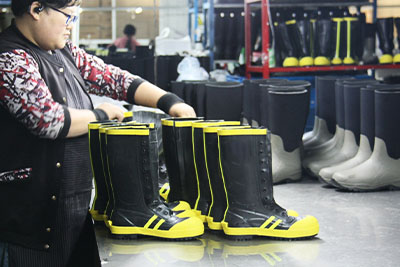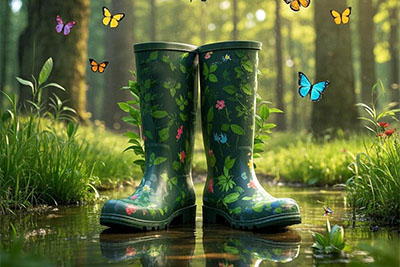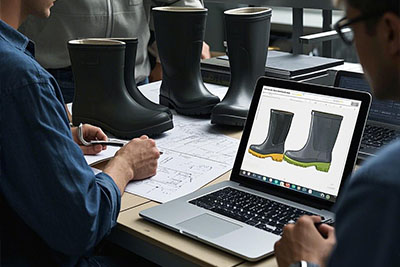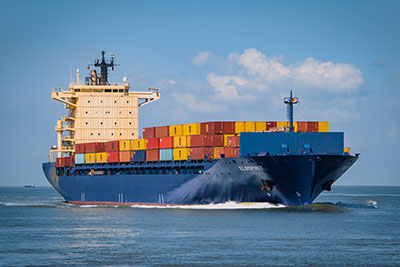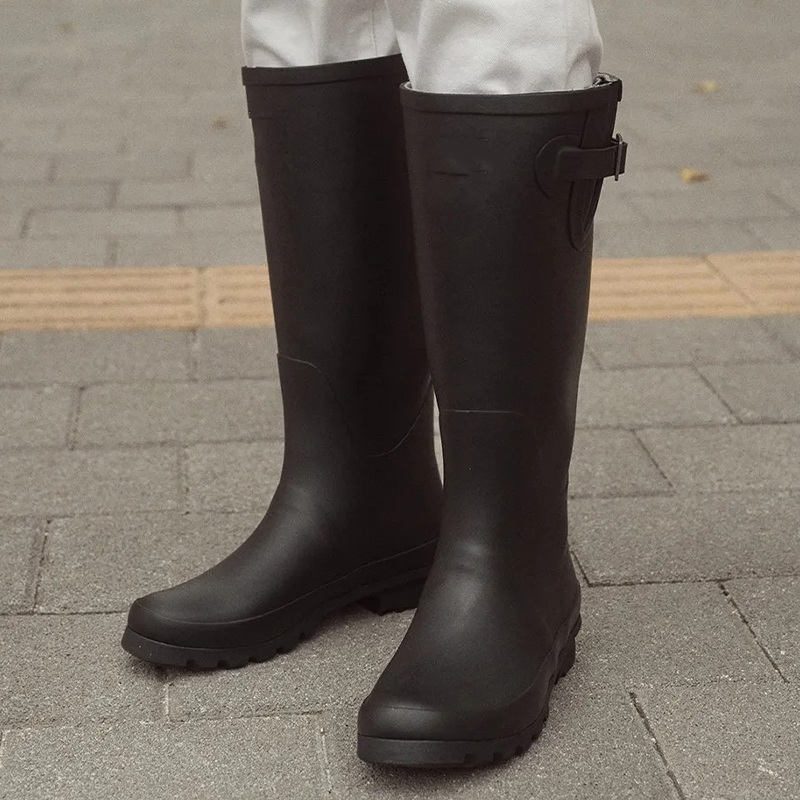What Are the Best Materials for Rain Boot Soles: Rubber or EVA
Rain boots are a must-have for keeping feet dry and safe in damp or muddy places. While the upper part of the boot blocks out water, the sole decides how good the boot is at holding ground, bending easily, feeling comfy, and lasting long. Picking the right stuff for rain boot soles is super important for staying safe, tough, and cozy in all kinds of weather. The main materials used are natural rubber, EVA (ethylene vinyl acetate), and Model Sole. Each one has special traits that make it fit for certain uses.
Importance of Rain Boot Soles
The sole of a rain boot isn’t just there to hold your foot. It acts as a shield against slipping, gives padding, and makes the boot last longer. In wet or risky spots, the sole’s material decides how well the boot stops falls and keeps you comfy all day.
Common Sole Materials
The top materials for making rain boot soles are natural rubber, EVA, and the one combines above 2 material, so called Model sole. They differ in how heavy they are, their prices, how bendy they feel, how durable they keep, and their effect on nature.
Material Overviews
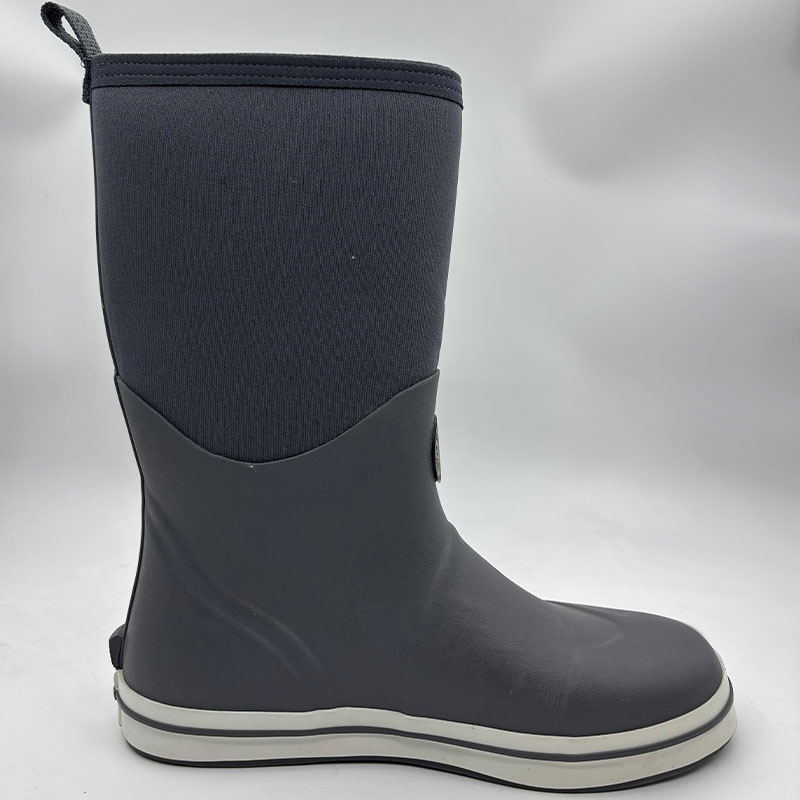
Natural Rubber Soles
Natural Rubber
Natural Rubber is one of the oldest picks for rain boot soles. It can come from nature, taken from the sap of rubber trees, then be made in labs through processes like styrene-butadiene rubber creation.
Key Properties (Durability, Traction, Water Resistance)
Rubber stands out with its tough build, great hold on surfaces, and awesome water-blocking ability. Plus, it stays bendy even when it’s chilly, unlike many plastic options.
Advantages of Rubber Soles
They’re super strong against scratches, holes, and rips, so they last a long time in rough places like building sites or muddy paths. Rubber also fights off chemicals and can break down naturally.
Disadvantages of Rubber Soles
Rubber soles weight more than stuff like EVA. This can tire you out even if people like to wear it. And natural rubber has aging problem. It will crack after long-term exposure to sunlight, just like rubber tyres. So it need to be stored in room and avoid sunlight to stop cracking.
Recommended Use Cases for Rain Boots
Rubber soles are perfect for outdoor work boots or hiking boots where you need the best toughness and grip on wet ground.
EVA Soles
Properties (Lightweight, Shock Absorption, Waterproof)
EVA is known for being super light, easy to bend, and great at soaking up bumps.
Advantages of EVA Soles
EVA soles are foamed with micro air bubbles inside, they are up to 60% lighter than rubber kinds. This makes them awesome for wearing a long time without getting tired. They also keep your feet warm by insulation feature as the air bubbles form a insulated layer up from the ground.
Disadvantages of EVA Soles
Firstly, they’re not as tough as rubber and can flatten out over time. Secondly grip is not okay for wet occasions. Then EVA is liable to abrasion. It will be worn out much quicker than Rubber.
Recommended Use Cases for Rain Boots
EVA soles are great for sporty rain boots, like ones for festivals or daily trips, where feeling good matters more than being super strong. As people want to get lighter and lighter boot for walking, EVA soles are now widely used in rubber boot industry.

Model sole picture
Model Soles
Properties (High-end, designable, lightweight and gripping)
Model sole is a category name of sole. It refers to a sole with EVA midsole layer and a thin natural rubber outer sole layer. Said 2 layers are cemented to be final sole body.
Advantages of Model Soles
Model sole absorbs the advantage of both EVA sole and rubber sole. It is of lighter weight than rubber sole and of better gripping than EVA sole. As it has 2 layers, model sole can be in dual-color.
Disadvantages of TPR Soles
Manufacturing complexity is the only disadvantage of model sole. As a result, price is higher than other kind of soles.
Recommended Use Cases for Rain Boots
Model soles always stand with premium rubber boots. They are widely used on hiker, hunting boot, safety boot, as well as fashion wellies which need a mix of good performance and lower weight.
Comparative Analysis
Waterproofing and Weather Resistance
All above category keep water out. But pure natural rubber sole give the best full protection against leaks. In cold areas, EVA stay more bendy.
Durability and Abrasion Resistance
Rubber is the winner with its amazing strength against tears and holes. So Model sole with rubber bottom acts the same. EVA wears out quicker on hard use.
Traction and Slip Resistance
Rubber grabs wet surfaces the best because of its strong friction. EVA’s hold is a bit weak on wet ground. Model sole stay same as Rubber sole.
Comfort and Weight
EVA feels the best with its soft cushion and super light feel. So as Model sole, because it has EVA midsole attached to the foot. Rubber is heavier but supports well.
Environmental and Cost Considerations
Natural rubber breaks down in nature but costs more. EVA is not that break down than rubber. Both materials can be recycled.
Determining the Best Material
The right sole material depends on what you need:
- For heavy work: pick rubber.
- For light and comfy: choose EVA.
- For premiumcemented rubber boots: take Model.
Each material has its own strong points for different needs, not just one best for all.
faq
Q1: Which sole material offers the best slip resistance?
A: Rubber grabs wet surfaces best thanks to its strong friction.
Q2: Are EVA soles durable enough for daily wear?
A: For light stuff like going to work or school, Yes. But EVA can flatten over time, so it’s not great for rough spots.
Q3: Is there an eco-friendly option among these materials?
A: Natural rubber breaks down in nature. You can also find recycled types from green makers like Trendy Boot Factory in China.
Q4: What type should I choose if I live in a very Hot area?
A: Stay away from EVA since it gets shrink in hot weather.
Q5: What type should I choose if I live in a cold area?
A: EVA is the best choice for cold weather as it is naturally insulated.
Customize Your Rain Boots with the Perfect Sole from Trendy Boot
If you want to design your rain boots with top-notch soles made from high-quality stuff like vulcanized rubber or molded EVA compounds, Handan Trendy Boot and Textile Co., Ltd. is your go-to. They’ve been making awesome men’s, ladies’, and kids’ outdoor welly boots, plus stylish rain boots, using cool tech since 1958.
They make up to 5000 pairs a day across 6 lines, with 15 mixers and 4 vulcanizers. Their strict checks, like leak-proof tests after vulcanization, keep quality high. Their QUAD-GUARANTEED system covers Environment (GRS/FSC certified), Technology (patented lightweight compounds), and Service (on-time delivery), making them a reliable OEM/ODM supplier worldwide.
Get in touch through WhatsApp at +86-18633619747 or email at yori@wellies.cn to start crafting your ideal pair now!

